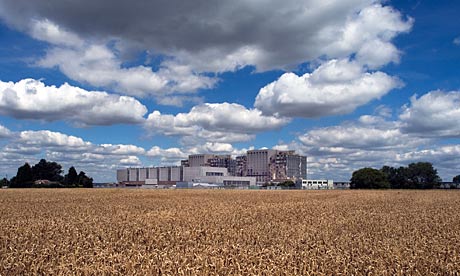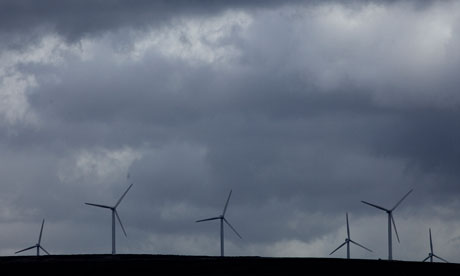1. From net oil exporter to net oil importer
a. Oil and Gas Production in the United Kingdom
b. Oil Export and import:
source: http://www.theoildrum.com/
UKCS: UK continental Shelf
1 therm is about 30 KWH
SOURCE: https://www.gov.uk/government/uploads/system/uploads/attachment_data/file/482767/OGA_production_projections_-_November_2015.pdf
e. Tracing the origin of Britain's fuel and energy
Most of the fuel and energy we depend on comes from a relatively small number of key installations. Just a few large facilities provide most of the fuel, gas and electricity which drives the rest of the country. Includes aerial shots of Stanlow Oil Refinery in Cheshire, Bacton Gas Terminal in Norfolk and Drax Power Station in Yorkshire. With a few major facilities providing much of our energy, the electricity transmission network is highly important. Published as part of the Britain From Above website: bbc.co.uk/britainfromabove/.
2. New nuclear stations
Nuclear power plant site plans released by government
Eight new locations announced by Chris Huhne first guide to future of nuclear power in UK since Japan's Fukushima disaster.

The new sites are all near exisiting nuclear power stations like Bradwell in Essex. Photograph: Brian Harris/Alamy
The government has pushed ahead with plans for new nuclear power plants in the UK, as it confirmed a list of eight sites where the next generation of reactors can be built.
The eight sites are: Bradwell, Essex; Hartlepool; Heysham, Lancashire; Hinkley Point, Somerset; Oldbury, south Gloucestershire; Sellafield, Cumbria; Sizewell, Suffolk; and Wylfa, Anglesey. All are adjacent to existing nuclear sites. It is the first major announcement on the future of nuclear power in the UK since the Fukushima disaster in Japan.
The energy and climate change secretary, Chris Huhne, had signalled last month that plans for new reactors in the UK were on track after an initial report on Fukushima from nuclear chief inspector Mike Weightman ruled out the need to curtail the operation of stations in the UK.
The plans for new nuclear power plants are part of a series of national policy statements on energy that were published on Thursday, following public consultation.
They will be debated and voted on in parliament, but ministers are hopeful that, with a pro-nuclear majority in the Commons, they will win.
The energy minister, Charles Hendry, said: "These plans set out our energy need to help guide the planning process, so that if acceptable proposals come forward in appropriate places, they will not face unnecessary hold ups."
Nuclear power is one of the issues that divided Conservatives and Liberal Democrats when they entered government, with the coalition deal allowing Lib Dem MPs to abstain. Huhne, a Lib Dem, has since given his backing to new reactors.
3. changing energy use in UK
from bbc.co.uk
The UK government wants to reduce its carbon dioxide emissions. It also wants to increase the amount of energy which comes from renewable sources.By 2020 European Union targets state that 20% of energy must come from renewable sources. Each member state of the EU may have a different target, as 20% is an average figure for the EU.
The UK has a target of 15% of its energy consumption being sourced from renewable energy. (In 2009 only 3% of energy came from renewable sources in the UK). Sweden has a target of nearly 50% whereas Malta has a target of 10%.
The EU also aims to reduce greenhouse gas emissions by 80-95% below 1990 levels by 2050.
There are two ways the energy use can change in the UK:
- Reducing the demand for energy
- Increasing the supply of renewable energy
Reducing energy demand
The demand for energy in the UK varies. This is because of:
- Economic factors: For example during the recession energy demand did not increase as predicted
- Seasonal factors: For example the demand for domestic energy over winter is greater than over the summer.
- Temporal factors: For example at night there is surplus energy on the national grid because demand is lower
There are also incentives to save energy – for example grants are available to help make a home more energy efficient. Find out more about energy efficient homes in the Waste and pollution revision bite.
Renewable power
Wind
UK power companies are now investing hundreds of millions of pounds in renewable power. The greatest amount of renewable energy in the UK comes from wind generation. In 2010 the world’s largest offshore wind farm was opened in Thanet, on the Thames estuary.
Wind Turbines on Ovenden Moor, West Yorkshire
Many wind farms have been set up, particularly in Scotland and Wales. However some plans for large wind farms have been blocked by planners.
Biomass
Production of energy from biomass is expanding. In 2011 a new biomass energy centre was opened in Chilton, Durham. The supply of energy for biomass is more predictable than other forms of renewable energy. However people are concerned about how sustainable the sourcing of biomass is.Wave and tidal
Energy from wave and tidal power could be developed more.4. UK investment in green energy stagnates at £2.5 bn.
Total financial commitment to renewable energy sharply down on 2009 figures as developing world surges ahead of Britain

In 2010 wind turbines capable of generating 1,192MW of power were constructed in the UK – compared with 30GW of gas-fired power plants that are at planning stage. Photograph: Christopher Thomond/guardian.co.uk
UK investment in green energy failed to pick up significantly in 2011, reflecting difficult economic circumstances and uncertainty over government policy. The government's figure of £2.5bn is slightly higher than an estimate for the previous year and well down on total investment in the sector in 2009.
The Department of Energy and Climate Change said the investment, which represents the total financial commitments announced by a variety of companies between April and December to proposed renewable energy projects, had the potential to create 12,000 jobs across Britain.
Chris Huhne, the secretary of state for energy and climate change, said: "Renewable energy is not just helping us increase our energy security and reduce our emissions. It is supporting jobs and growth across the country, and giving traditional industrial heartlands the opportunity to thrive again."
But the £2.5bn investment announced since April showed little progress from 2010, when £2.1bn was poured into renewables and other low-carbon forms of energy in the UK, according to the US-based thinktank Pew Environment Group.
The 2010 figure was itself a dramatic fall of 70% compared with the investment reached in 2009, when at least £7.1bn was put into the sector.
DECC said this year's investment figures were the first it had compiled, so direct comparisons with previous years have not been possible because Pew's methodology was likely to be different. However, the department agreed that Pew's figures could be used as an indication.
Investors have complained of a damaging uncertainty in government policy, as twice this year the government cut the subsidy rates available to solar energy, and this autumn announced plans to reduce the incentives for wind power.
In 2010, the UK fell out of the league of the top 10 countries around the world in terms of renewable energy investment. This year's figures are extremely unlikely to redeem the UK's place in the league, as many countries in the developing world in particular have surged ahead, including China and India.
The fall in investment in renewables confirms research by the Guardian earlier this month that showed the number of wind turbines built this year is down by half on last year. In the year to the end of November, 540MW of new turbines, on land and offshore, were built – comprising 200 onshore turbines and 50 offshore. In 2010 more than double that capacity – 1,192MW of turbines – were constructed.
This contrasts sharply with more than 30GW of gas-fired electricity generation that is in the planning stages. Charles Hendry, minister for energy, said oil and gas were crucial to the UK economy, contributing about 2% of GDP. Granting 46 new licences to explore for oil and gas under the North Sea, he said: "Our innovative licensing system continues to make the UK one of the most attractive places to do business. These continued high levels of interest, and the award today of these licences, gives me yet more reason to be optimistic for a prosperous 2012 for the UK oil and gas sector."
DECC said last year there was a 27% increase in renewable energy consumption from 42.6TWh in 2008 to 54TWh in 2010 – representing 3.3% of total energy consumed. The energy from wind generation increased by 46% from 7 terawatt hours (TWh) in 2008 to 10.2TWh in 2010, and in 2010 achieved 5GW of offshore and onshore wind capacity.
There was also, according to DECC, a threefold increase in the use of biofuels in transport from 1% of total road transport fuel supply in 2007-08 to 3.33% in 2010.
Huhne said: "Our renewable target is less demanding than other EU member states, but the effect is bringing real jobs and investment. I do not want the UK to be left behind by turning our back on the green economy. The agreement to negotiate a global deal secured at [international climate change talks in December in] Durban has reinforced major nations' commitment to cutting carbon. We cannot afford to stand alone while the world wises up."





